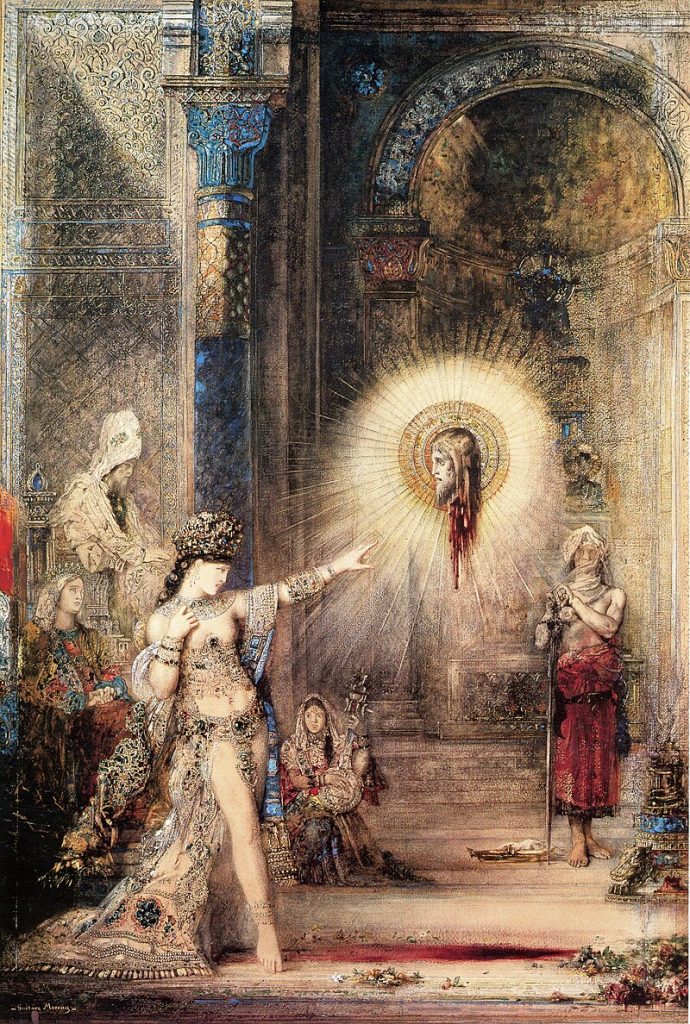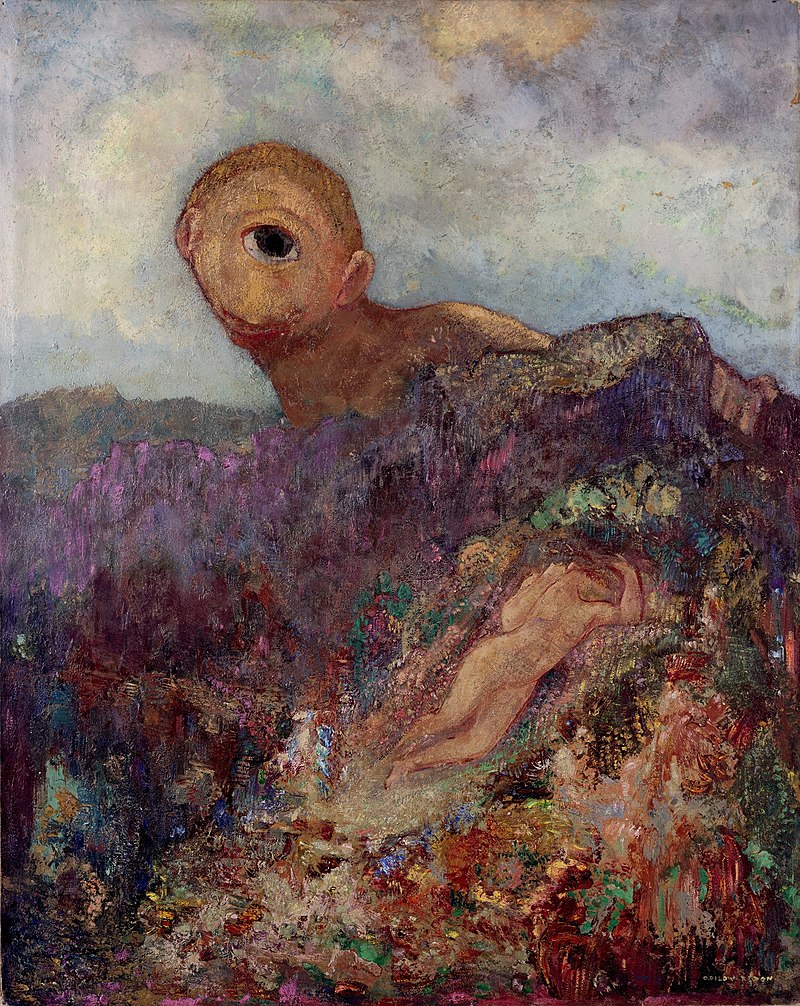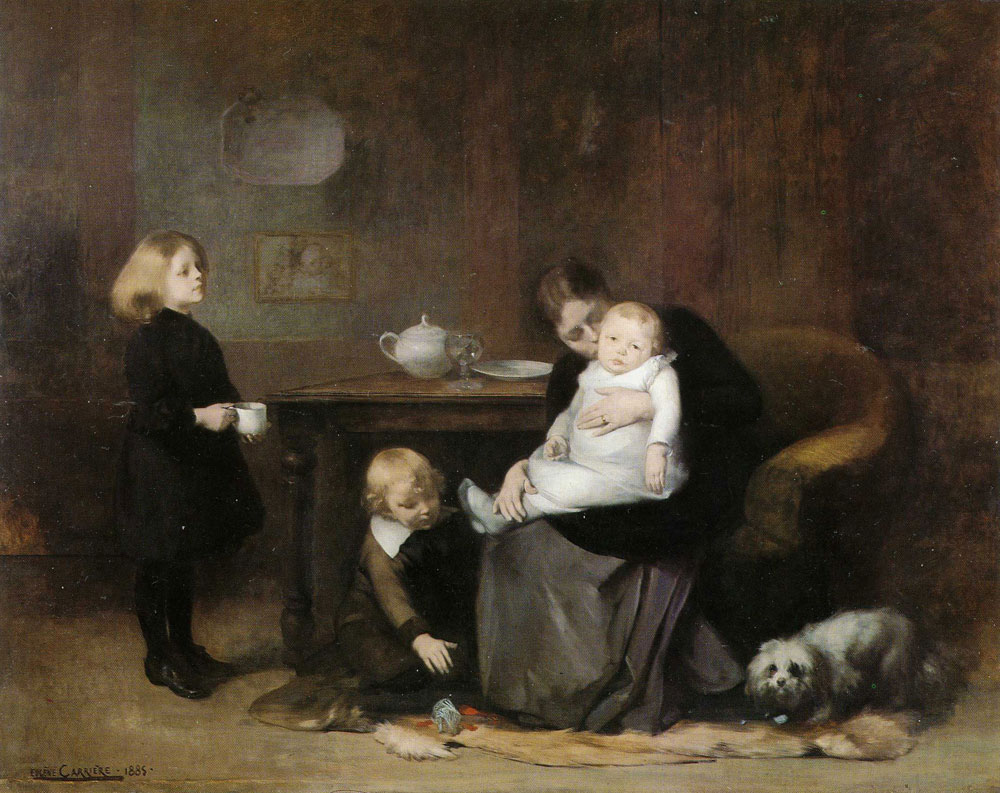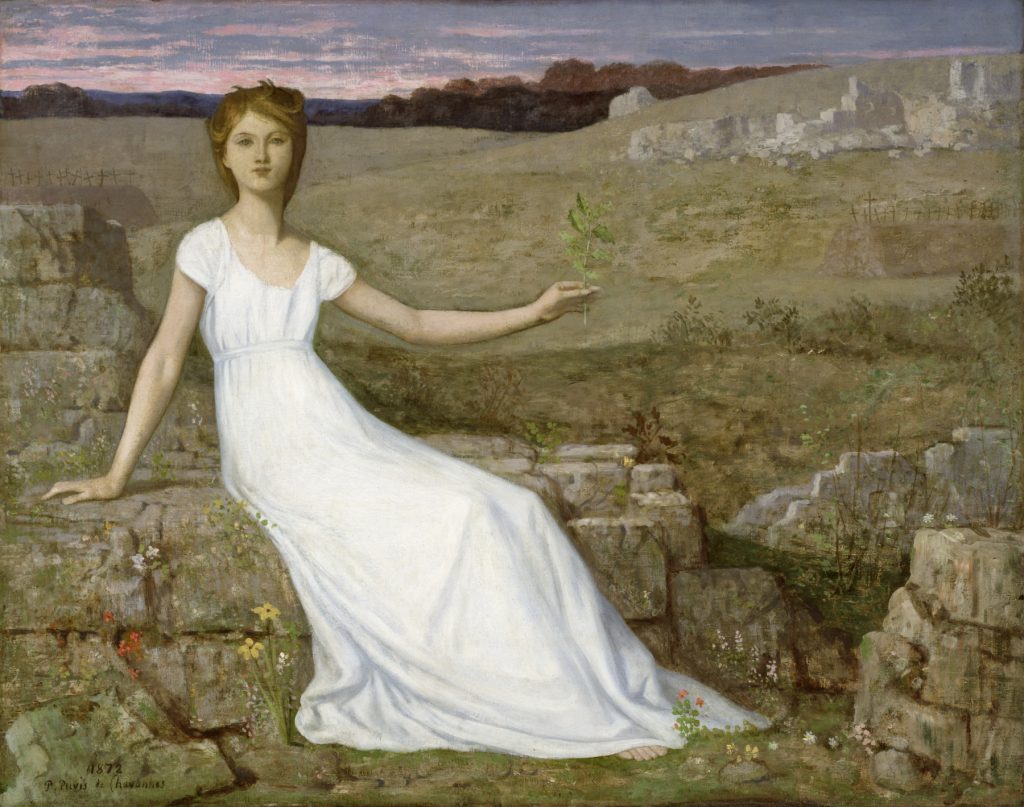Symbolism in 19th-century Parisian art was a movement that sought to convey emotions, ideas, and spiritual themes through symbolic imagery. Artists of this period often used allegorical elements and metaphors to express complex concepts beyond literal representation. Here are five examples of symbolism in 19th-century Parisian art:

The Apparition, Gustave Moreau, 1876. watercolor. Musée d’Orsay, Paris.
Gustave Moreau – “The Apparition” (1876): Gustave Moreau’s painting “The Apparition” is a prime example of symbolism. It depicts a fantastical, otherworldly scene where a mysterious female figure appears before a kneeling man. The work is rich in symbolism, exploring themes of spiritual revelation and the mysterious intersection of the divine and the earthly.

Painted in oils on board, then mounted on wood, and is now in the Kröller-Müller Museum in the Netherlands
Odilon Redon – “The Cyclops” (c. 1898): Odilon Redon, a prominent symbolist artist, created “The Cyclops,” an artwork featuring a mystical one-eyed creature. Redon’s use of vivid colors and dreamlike imagery serves to convey a sense of the fantastical and the subconscious. The Cyclops becomes a symbol of the mysterious and irrational.

Fernand Khnopff (1858–1921)
Fernand Khnopff – “The Caress” (1896): Fernand Khnopff’s painting plays an important part in the plot of the short story “The Caress” from the book “Axiomatic” of Greg Egan. The work is also an interpretation of the French symbolist painter Gustave Moreau’s 1864 painting Oedipus and the Sphinx.

The Sick Child 1885, 200 x 246 cm
Oil on canvas, Musée d’Orsay, Paris
Eugène Carrière – “The Sick Child” (1885): Eugène Carrière’s “The Sick Child” is a poignant representation of the symbolist emphasis on emotions and inner states. The subdued palette and the ethereal glow surrounding the sick child convey a sense of spiritual and emotional depth. The sick child becomes a symbol of vulnerability and mortality.

Oil on canvas, 103 x 130 cm
Walters Art Museum, Baltimore
Pierre Puvis de Chavannes – “Hope” (1872): In “Hope,” Puvis de Chavannes presents a symbolic female figure, embodying the concept of hope. The use of classical symbolism, such as the anchor and the woman looking towards the horizon, communicates optimism and the enduring human spirit in the face of challenges.
These examples illustrate the diversity within the symbolist movement, where artists used symbolic language to express personal, emotional, and often esoteric ideas. Symbolism in 19th-century Parisian art was a reaction against realism, embracing a more imaginative and evocative approach to artistic expression.
